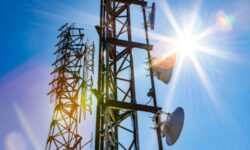Predicting How IoT and AI Will Affect the Future of Fire Systems
Fire and life-safety expert Shane Clary believes in the near future fire systems will lean more toward the use of wireless Internet or intranet as opposed to radio frequencies.

This month’s article concludes my discussion on what I see as the future with fire detection, notification and fire alarm systems in general. Last month I covered detectors and sensors as well as notification of an alarm to the occupants within a building.
This month I will be taking a further look at notification and the use of artificial intelligence (AI) and the Internet of Things (IoT) as it may relate to installed systems.
By the time you read this, the NFPA 72 Correlating Committee will have met for their review of the first draft of the 2022 edition of The National Fire Alarm and Signaling Code. Starting with next month’s article, I will be reviewing the proposed changes to this standard.
For the past several editions of NFPA 72, the use of 520Hz sounders has been required for notification appliances that are installed within a sleeping area. It takes more power to drive a 520Hz sounder than the standard horn.
In addition, the requirements of the Americans with Disabilities Act (ADA) have for more than 20 years required the use of strobes to alert the occupants of a building of an alarm activation. The original method was through the use of a xenon gas tube, which also requires a higher current than the notification appliances that were used pre-ADA.
Within the past several years, light emitting diodes (LED) have begun to be used as the means for providing the illumination. However, there have been issues with this technology that I have discussed in prior articles. It is my feeling that within the next several years, the issues around the use of LEDs will be resolved so that the xenon tube will be retired.
This will lower the overall current consumption and end rush current that is required when a horn/strobe or strobe is activated. The use of the 520Hz sounder will also become the common appliance that will be used throughout occupancies as opposed to just in sleeping areas.
This again will be due to lower current draw. With these two changes in technology, there will be an evolution in wireless notification appliances within buildings. With changes within how notification appliances are designed and technological advances with batteries, the requirement of having to pull either 14 or 12 AWG conductors through a building and having to install booster panels throughout a building will go the way of the dial telephone.
Within the 2022 edition of NFPA 72 there will be new language, which has yet to be written regarding cybersecurity. This is seen as being required due to the increase use of networks within and outside of protected premises for fire alarm systems.
While at this time most of these networks are on copper conductors or fiber, I feel that in the not too distant future, systems will be wireless and more toward the use of wireless Internet or intranet as opposed to the radio frequencies that are generally used today.
The Nest product line, which is for residential use, is interconnected wirelessly within a home and is connected to the outside world via the Internet. Today, I monitor a number of Nest smoke alarms within my home via my smartphone. There are still issues to resolve in how if I receive an alarm indication do I get that information to my local fire department, but this is but a very small part of the IoT.
At this time there are an estimated 26.6 billion connected devices in use. By 2030 it is projected that there will be 125 billion connected devices in use. Within a building, the fire alarm system of the not too distant future, as well as all devices and appliances will be part of that building’s IoT, along with other building systems, such as HVAC, lighting, signage, elevators, security and a host of other systems within the building.
They will all be interconnected. By being interconnected, the use of AI will be able to be used, and will be used so that these systems can work together to be more efficient and to provide information to both the operators of the building and the occupants within.
Some of this information, regarding security and life safety will be transmitted to the building occupants through their smartphones, pads, watches or other such devices. All will be truly interconnected.
Safeguards will need to be developed so that there is reliability in the operation of these systems. This is still an area that the various technical committees that promulgate NFPA 72 will need to address, as well as UL, FM and ETL and the model building and fire codes.
If you enjoyed this article and want to receive more valuable industry content like this, click here to sign up for our FREE digital newsletters!

Security Is Our Business, Too
For professionals who recommend, buy and install all types of electronic security equipment, a free subscription to Commercial Integrator + Security Sales & Integration is like having a consultant on call. You’ll find an ideal balance of technology and business coverage, with installation tips and techniques for products and updates on how to add to your bottom line.
A FREE subscription to the top resource for security and integration industry will prove to be invaluable.








